Common Causes of Mold in Homes
When it comes to common household issues, mold sits high on the list. Its unwelcome presence often prompts the question: what are the main causes of mold in homes?
Understanding mold causes can help you prevent its growth and maintain a safe and healthy living environment.
Key Takeaways
- Mold thrives in damp environments. Excess moisture is the number one trigger for mold growth, making it essential to promptly address water leaks, condensation issues, and incidents of flooding.
- Building materials such as wood, drywall, and carpets can provide a fertile ground for mold when they get wet.
- High humidity levels, often caused by overuse of humidifiers or overwatering of household plants, can create a conducive environment for mold.
- Poor ventilation can lead to a build-up of moisture indoors, encouraging mold growth. Ensuring good ventilation, especially in bathrooms, kitchens, and basements, can help keep mold at bay.
- Neglected appliances, including air conditioners and dehumidifiers, can collect moisture and become a hotbed for mold. Regular maintenance is crucial.
- Rapid changes in temperature can lead to condensation, providing mold the moisture it needs to thrive.
Contents
The Basics of Mold
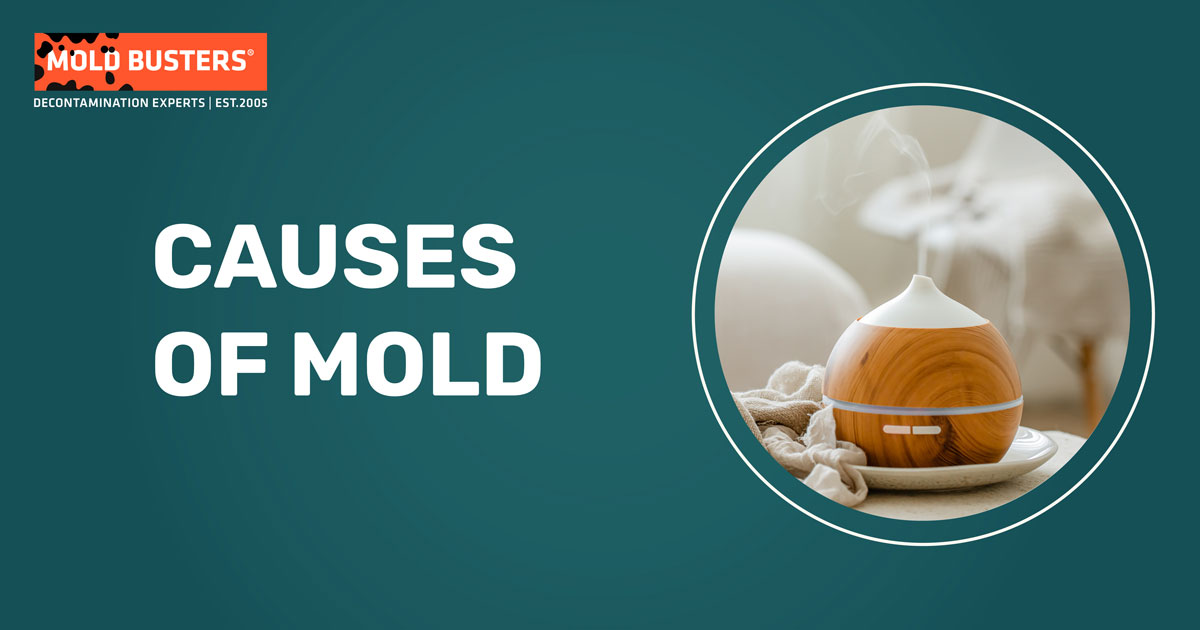
Before we delve into the causes of mold, it’s important to first understand what mold actually is. Mold is a type of fungi, belonging to a family with over 100,000 known species. It’s present in our environment and can grow virtually anywhere as long as the conditions are right.
Mold thrives on organic material, which is abundant in most homes. It loves spreading on wood, fabrics, drywall, and even some types of paint. It’s why you’ll often find mold on walls, beneath floors, and in carpets. However, mold is growing in hard-to-see spots like attics, crawlspaces, and inside walls.
What Causes Mold – The Mold Growth Triangle
| Essential Element for Mold Growth | Description | Prevention Tips |
|---|---|---|
| Moisture | Mold spores need moist environments to grow. Sources of moisture can include leaks, high humidity, condensation, or flooding. | Identify and fix leaks promptly, use dehumidifiers or air conditioners in high humidity areas, and clean up spills immediately. |
| Food Source | Mold feeds on organic materials like wood, drywall, cardboard, paper, and even some paints and adhesives. | Regular cleaning can help reduce available food sources. However, since many materials mold feeds on are common in homes, controlling moisture is crucial. |
| Appropriate Temperature | Mold grows best in warm conditions, typically between 2 and 40°C. However, some mold types can survive in extreme heat or cold. | It’s difficult to control temperature as a preventive measure since most molds grow in temperatures comfortable to humans. The focus should remain on controlling moisture and food sources. |
Let’s delve into these three elements a bit more deeply.
1. Temperature and Mold Growth
Most molds thrive in temperatures that humans find comfortable, which unfortunately makes our homes an ideal breeding ground. While we can’t very well change our living conditions, understanding how temperature affects mold growth can help us make smarter decisions about prevention.
2. Feeding Habits of Mold
Mold’s food source is any organic, carbon-based material. In the home, this includes a wide range of materials such as wood, fabrics, drywall, and even certain types of paint. It’s virtually impossible to remove all potential food sources for mold, which is why managing the other factors that contribute to growth is crucial.
3. Moisture: The Key to Mold Growth
Out of the three elements necessary for mold growth, moisture is the most manageable and the most critical to control. Mold can’t grow without moisture, making it the key to both mold growth and prevention.
Understanding these three factors can help you prevent mold growth and maintain a healthier indoor environment. But let’s delve deeper into the causes of mold, exploring how common household conditions can inadvertently create the perfect breeding ground for this insidious fungus.
Worried About Mold? Get a Free Inspection!
Understanding mold causes is crucial, but dealing with it can be overwhelming. Don’t let mold go unchecked! Contact Mold Busters for a free virtual mold inspection. Our experts are ready to provide a comprehensive assessment and a plan to tackle any mold issue, ensuring your home is safe and healthy. Act now to protect your space!
16 Most Common Causes of Mold in Homes
Let’s delve into some specifics, shall we? Understanding these causes can help you recognize potential problem areas in your home and take proactive steps to prevent mold growth:
1. Water Leaks
Water leaks are one of the most common causes of mold growth in homes. Leaks can occur in your pipes, toilets, faucets, and even your roof and walls. These leaks provide the much-needed moisture that mold spores crave. Over time, a small, seemingly insignificant leak can result in extensive mold growth, especially in hidden areas like damp basements or behind walls.
Regular inspection of your plumbing systems and roof can help detect these leaks early before they lead to a more serious mold problem. If you find any leaks, it’s essential to fix them promptly and thoroughly dry the area. For a thorough inspection of potential mold hotspots, you might want to consider professional mold inspection and testing services.
2.Poor Ventilation
Poor ventilation can create stagnant, moisture-laden air, leading to high relative humidity. This environment is a paradise for mold growth. Rooms in your home with high humidity and lack of airflow, such as bathrooms, kitchens, and laundry rooms, are particularly susceptible.
Proper ventilation and air conditioning can significantly improve your home’s air quality and reduce the moisture that mold spores need to grow. Keep your rooms well ventilated, use exhaust fans in your kitchen and bathroom, and ensure your air conditioning systems are well maintained. Check out our Air Quality Testing in Ottawa or Air Quality Testing in Montreal for professional help.
3. High Humidity & Condensation
Condensation is another common cause of mold growth in homes. It occurs when warm air comes into contact with cold surfaces such as windows, metal pipes, and walls in poorly heated rooms. This process creates moisture that can encourage mold growth.
Basements, crawl spaces, and bathrooms are often the most humid parts of a home and, therefore, are common areas where mold can be found.
To prevent condensation, try to keep your indoor temperature stable and insulate cold surfaces where possible. You can also use dehumidifiers or air conditioners to keep your humidity levels within a healthy range (30-50%).
4. Flooding
Basement flooding can quickly lead to mold growth due to the prolonged dampness. It’s crucial to remove the water rapidly and dry out the affected area thoroughly. It’s also advisable to take preventive measures like installing a sump pump or applying waterproofing measures to your basement walls.
For severe cases, professional mold removal services can ensure that the mold is completely eliminated.
5. Building Materials
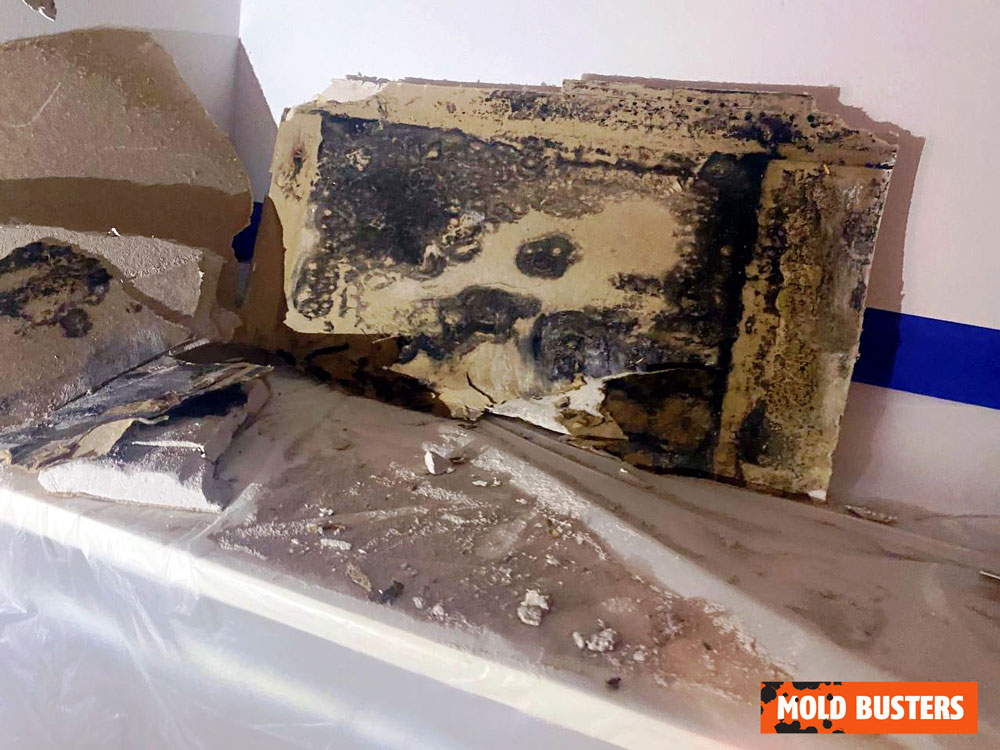
Certain building materials like drywall, wood, and carpets can facilitate mold growth when they become damp. These materials are porous and can retain moisture, providing a fertile breeding ground for mold.
For areas in your home that are prone to moisture, like bathrooms, kitchens or garages, consider using water-resistant materials. If these materials do get wet, they should be dried promptly to prevent mold growth.
6. Roof and Foundation Leaks
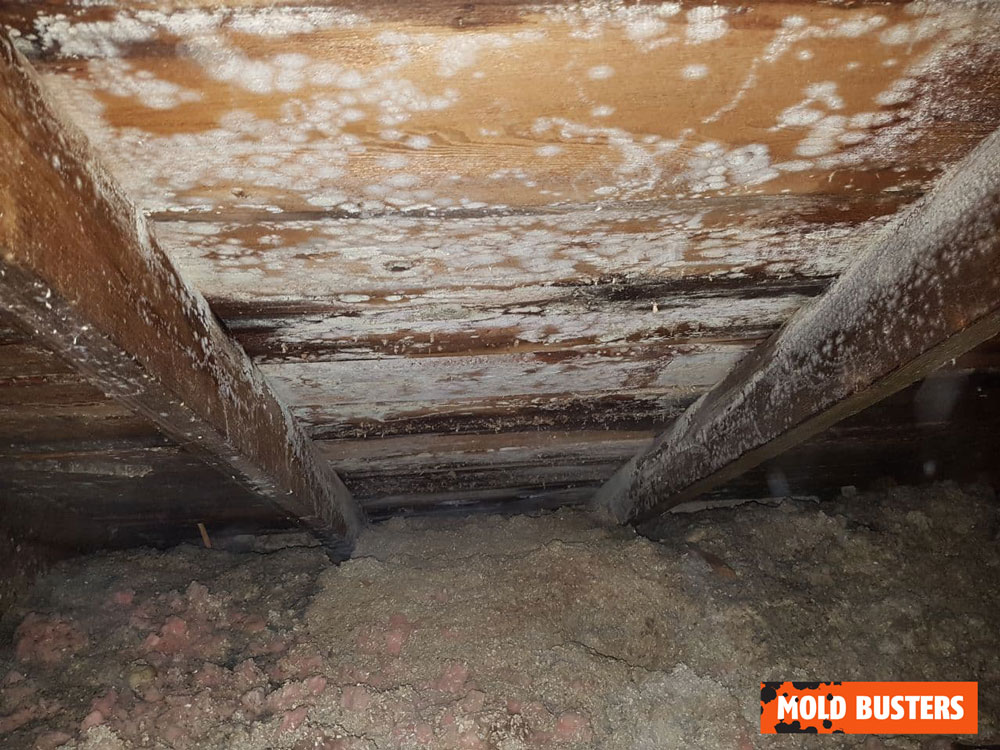
Damaged roofing or cracks in your foundation walls can allow water to seep into your home, contributing to a damp environment that encourages mold growth. Regularly inspecting your roof for leaks and your foundation for cracks can help prevent mold problems.
7. Poorly Installed or Damaged Insulation
Insulation is not just about keeping your home warm in the winter and cool in the summer. It can also help prevent insulation mold growth. If insulation in walls, floors, or ceilings is poorly installed or damaged, it can lead to cold spots. These cold spots can lead to condensation, creating a moist environment that mold spores love.
Regularly check your insulation materials and ensure they are in good condition. Pay particular attention to the insulation in your attic and crawl spaces, as these areas are often overlooked yet are prime spots for mold growth. If you notice any damaged or missing insulation, it should be repaired or replaced promptly.
8. Dusty Home Environment
You may not think of household dust as a cause of mold, but it can be. Dust is made up of tiny particles of organic materials, which can serve as a food source for mold. When combined with moisture, even a light layer of dust can offer an environment conducive to mold growth.
Keep your home clean and dust-free as much as possible. Regular vacuuming, dusting, and cleaning of floors and other surfaces can go a long way in preventing mold growth. Don’t forget to clean less accessible areas such as behind furniture, on window sills, and in duct joints of your heating, ventilation, and air conditioning systems.
9. HVAC Systems
Your Heating, Ventilation, and Air Conditioning (HVAC) system can also contribute to mold growth if not properly maintained. When your air conditioner cools the air, it also removes moisture, which is collected in a drip pan and then drained away. However, if the drip pan or drain lines become blocked, the stagnant water can become a breeding ground for mold.
Ensure that your HVAC system, including air conditioners and dehumidifiers, is regularly serviced and kept clean. Check your drip pans and drain lines frequently, especially during the cooling season, and clean them if necessary.
For more information read our Mold in Air Conditioners and Mold in Air Vents articles.
10. Damp Clothing and Linens
Have you ever forgotten a load of laundry in the washing machine only to discover it later, sitting in its damp state? Or maybe you’ve stored away winter clothing in a basement or attic without ensuring they’re fully dry? These scenarios can increase the risk of mold growth. Damp clothing or linens provide an ideal breeding ground for mold spores.
To prevent mold growth, always ensure that your laundry is thoroughly dried before folding and storing it. If you’re air-drying clothes indoors, make sure the room is well ventilated to prevent a build-up of humidity. For stored clothing or linens, it’s crucial to ensure they are completely dry and stored in a well-ventilated, dry place.
11. Old and Decaying Wood
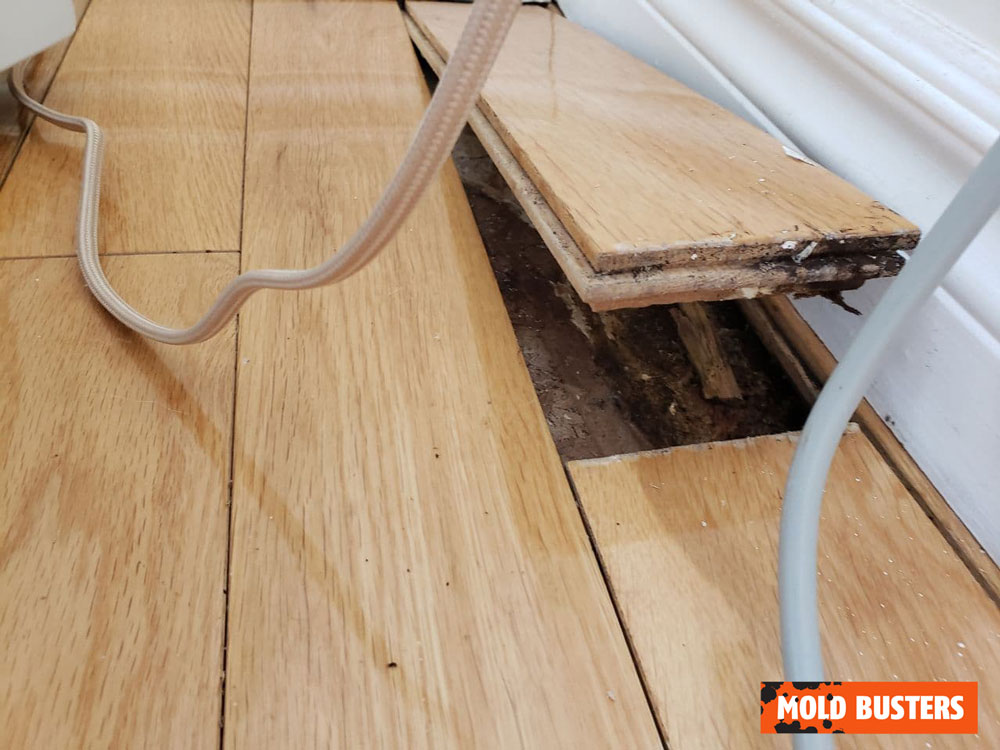
Wood is a favorite food source for mold. Older homes with decaying wooden structures can be particularly susceptible to mold growth, especially if the wood is exposed to moisture. This can include wooden beams, floorboards, wall studs, and even antique wooden furniture.
Regularly inspect any exposed wood in your home for signs of decay and moisture. If you find any, it’s essential to address the issue promptly to prevent mold growth. This might mean repairing or replacing the affected wood and addressing the source of the moisture.
12. Household Plants
While household plants are great for adding a touch of nature and purifying the air in your home, they can also contribute to mold growth. Overwatering plants or having too many plants can increase humidity levels in your home.
To prevent mold growth, avoid overwatering your plants, and ensure your plants have proper drainage. Keep the general humidity of your house in check and consider using a dehumidifier if needed.
13. Humidifiers
Humidifiers can be a great tool for improving comfort in your home, especially during the dry winter months. However, excessive use of humidifiers can raise the humidity level in your home too high, creating an environment that mold thrives in.
When using a humidifier, it’s crucial to maintain a balance. Aim to keep your home’s humidity level between 30% and 50%. Use a hygrometer – a small, inexpensive device – to measure your home’s humidity level. If it’s consistently above 50%, you might be setting the stage for a mold performance you don’t want to see.
14. Improperly Sealed Windows and Doors
Windows and doors in your home should not just be for aesthetics or security; they also play a vital role in controlling moisture levels. If your windows and doors are not correctly sealed, they can allow rainwater or even simple atmospheric moisture to seep into your home, particularly during periods of heavy rainfall or high humidity. This moisture can be absorbed by your walls, carpeting, and other building materials, providing a welcome environment for mold to grow.
Ensure that the seals around your windows and doors are intact and effective. Regularly check for any visible signs of water penetration, especially after heavy rainfall. If you notice a leak, address it immediately. If the task is beyond your DIY capabilities, don’t hesitate to call in a professional for a repair. Our mold inspection and mold testing services in Montreal and Ottawa can help determine if the moisture has led to mold growth.
15. Spills and Accidents
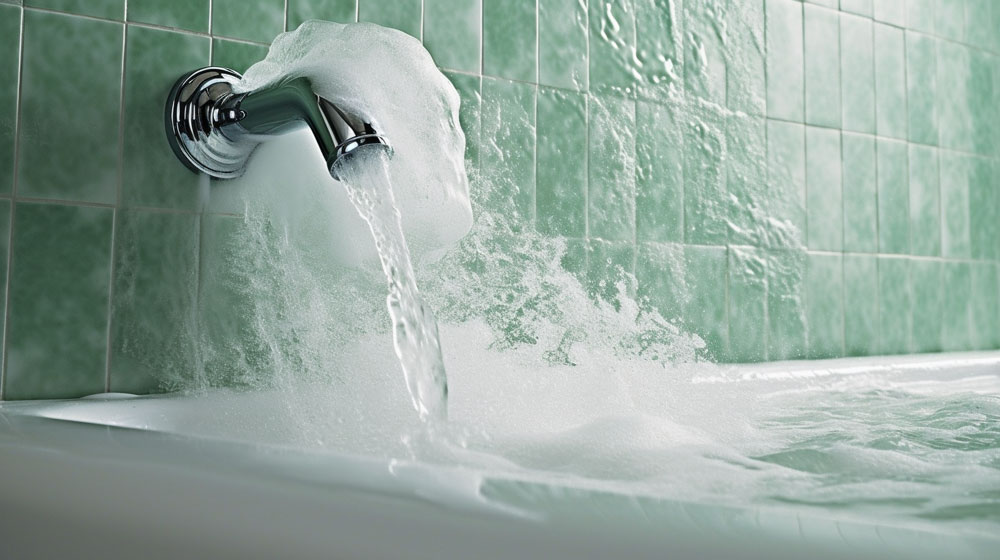
Accidental water spills that aren’t quickly cleaned up can seep into carpets, rugs, or hard-to-reach places, leading to mold growth. Similarly, incidents like an overflowing bathtub or a child’s spilled drink can lead to unwanted mold if not properly addressed.
The key here is prompt action. If a spill or accident occurs, clean it up as soon as possible, ensuring the area is thoroughly dried. For larger spills, especially on carpets or upholstery, professional cleaning may be necessary to ensure all moisture is removed.
16. Pet Activities
Yes, our beloved pets can inadvertently contribute to mold growth in homes. Wet fur, water from pet bowls, and even pet accidents can increase moisture levels, providing an environment conducive to mold growth.
Keep a watchful eye on your pets and their activities. Dry them off thoroughly after they’ve been outside in the rain or had a bath. Regularly clean and dry their eating and sleeping areas. And of course, promptly clean up any accidents they might have.
By recognizing and addressing these conditions, you can prevent mold from gaining a foothold in your home. However, recognizing mold isn’t always easy, as it can grow in hidden or hard-to-reach areas. This is why it’s essential to stay vigilant and take proactive steps to detect and prevent mold growth.
Detecting and Dealing with Mold in Your Home
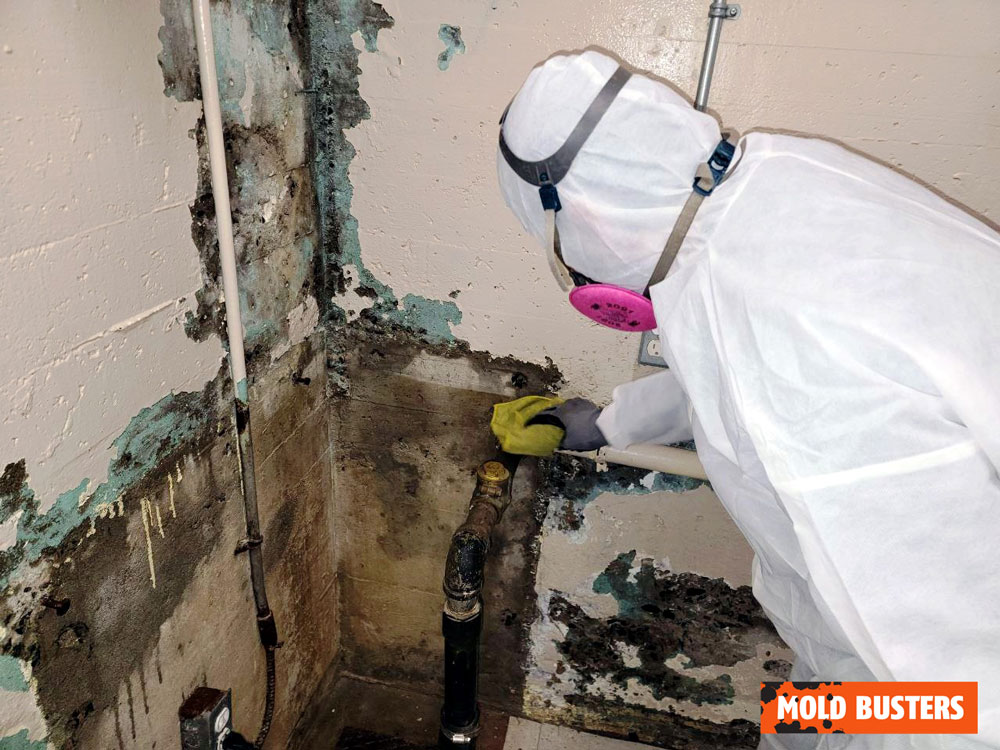
If you suspect mold in your home, the best course of action is to call certified mold experts like Mold Busters in Ottawa or Mold Busters in Montreal. Our team can help you identify and eliminate mold from your home safely and effectively. Here are some of the services we offer:
- Mold Inspection: A professional mold inspection is crucial for detecting mold growth in hidden or hard-to-reach areas, such as attics, crawl spaces, and wall cavities. Regular inspections can help you catch mold problems early, before they become more extensive and costly to remediate.
- Mold Testing: Mold testing is an essential step in confirming your suspicions and identifying the specific type of mold present in your home.
- Mold Remediation: Mold remediation services focus on removing mold from affected areas and addressing the underlying moisture problem. Proper mold remediation ensures that mold colonies are eliminated, preventing their return.
- Air Quality Testing: In addition to visible mold, airborne mold spores can also impact your home’s air quality. Air quality testing in Montreal or Ottawa can help you assess your home’s overall air quality and take appropriate measures to improve it.
Preventing Mold Growth: Tips for a Healthier Home
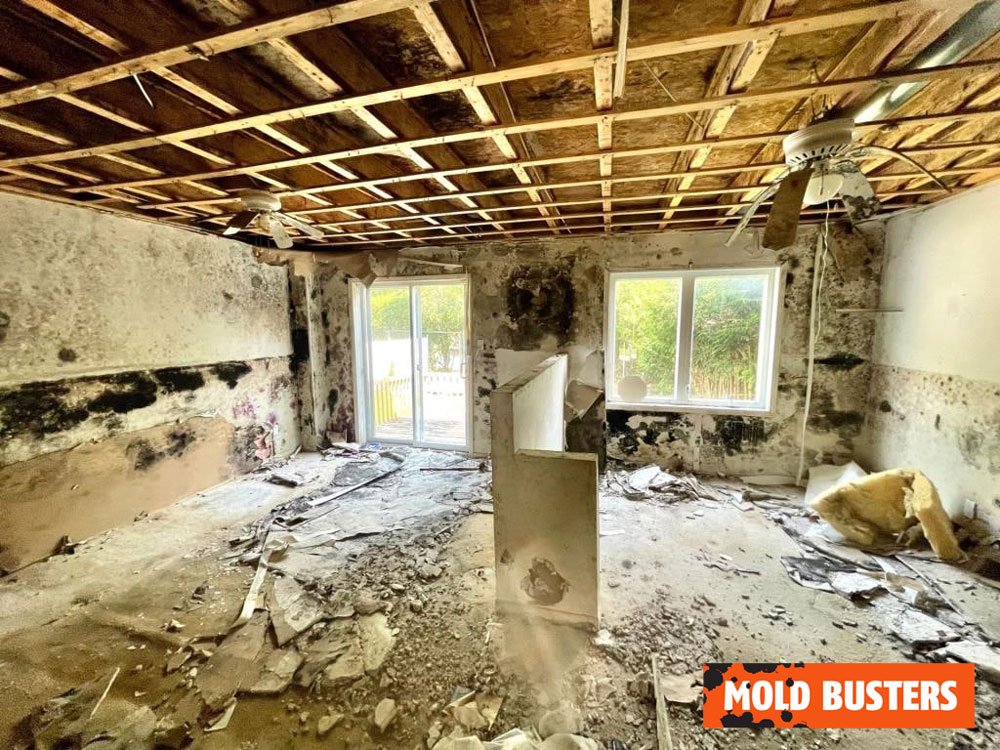
Now that you know what causes mold growth, you can take steps to prevent it in your home. Here are some practical tips for maintaining a mold-free environment:
- Control Humidity Levels: Use a dehumidifier or air conditioner to maintain relative humidity between 30-50%. This will help prevent condensation on cold surfaces and discourage mold growth.
- Proper Ventilation: Ensure adequate ventilation in moisture-prone areas, such as bathrooms, kitchens, and basements. Install exhaust fans or use open windows to promote air circulation and remove excess moisture.
- Promptly Address Leaks and Spills: Fix any leaks in your plumbing, roof, or foundation as soon as possible, and clean up spills promptly to prevent moisture buildup.
- Regular Maintenance: Regularly inspect your home for signs of mold, paying special attention to areas prone to moisture problems, such as basements, bathrooms, and attics.
- Improve Insulation: Proper insulation can help prevent condensation on cold surfaces, reducing the likelihood of mold growth.
Remember, prevention is the key to maintaining a healthy and mold-free home. By understanding the causes of mold and taking the necessary steps to address them, you can protect your home and your health.
FAQ
What temperature does mold grow at?
A: Mold grows best in warm conditions, typically between 2 and 40°C. However, some types of mold can survive in extreme heat or cold.
Can mold grow in my home without me knowing?
A: Yes, mold can grow in hidden areas of your home, such as behind wallpaper, in wall cavities, under floorboards, or in attics and crawlspaces. Regular inspection and air quality testing can help detect hidden mold growth.
How quickly can mold grow after a water leak or flood?
A: Mold can start to grow within 24 to 48 hours of water intrusion. It’s important to address any water leaks or flooding quickly, dry out the area, and repair any damage to prevent mold growth.
What causes mold on walls in a house?
Mold on walls in a house is typically caused by excessive moisture, poor ventilation, and high humidity. Leaks, condensation, or flooding can introduce water into these areas, providing the damp conditions that mold spores need to grow and thrive.
Conclusion
Mold Busters urges you to share this information with friends, family, coworkers, and neighbors. Raising awareness about the causes of mold can help prevent its growth in our homes and communities.
Contact Mold Busters now for certified mold inspection, mold testing, and mold remediation services with same-day service. Together, we can create healthier living environments.
For our readers from Quebec and Ontario, you can view more about our dedicated services in Montreal and Ottawa. We’re here to ensure your homes are safe and healthy environments for you and your families.

Get Special Gift: Industry-Standard Mold Removal Guidelines
Download the industry-standard guidelines that Mold Busters use in their own mold removal services, including news, tips and special offers:
Published: September 7, 2018 Updated: August 3, 2023

Written by:
John Ward
Account Executive
Mold Busters
Fact checked by:
Michael Golubev
CEO
Mold Busters
